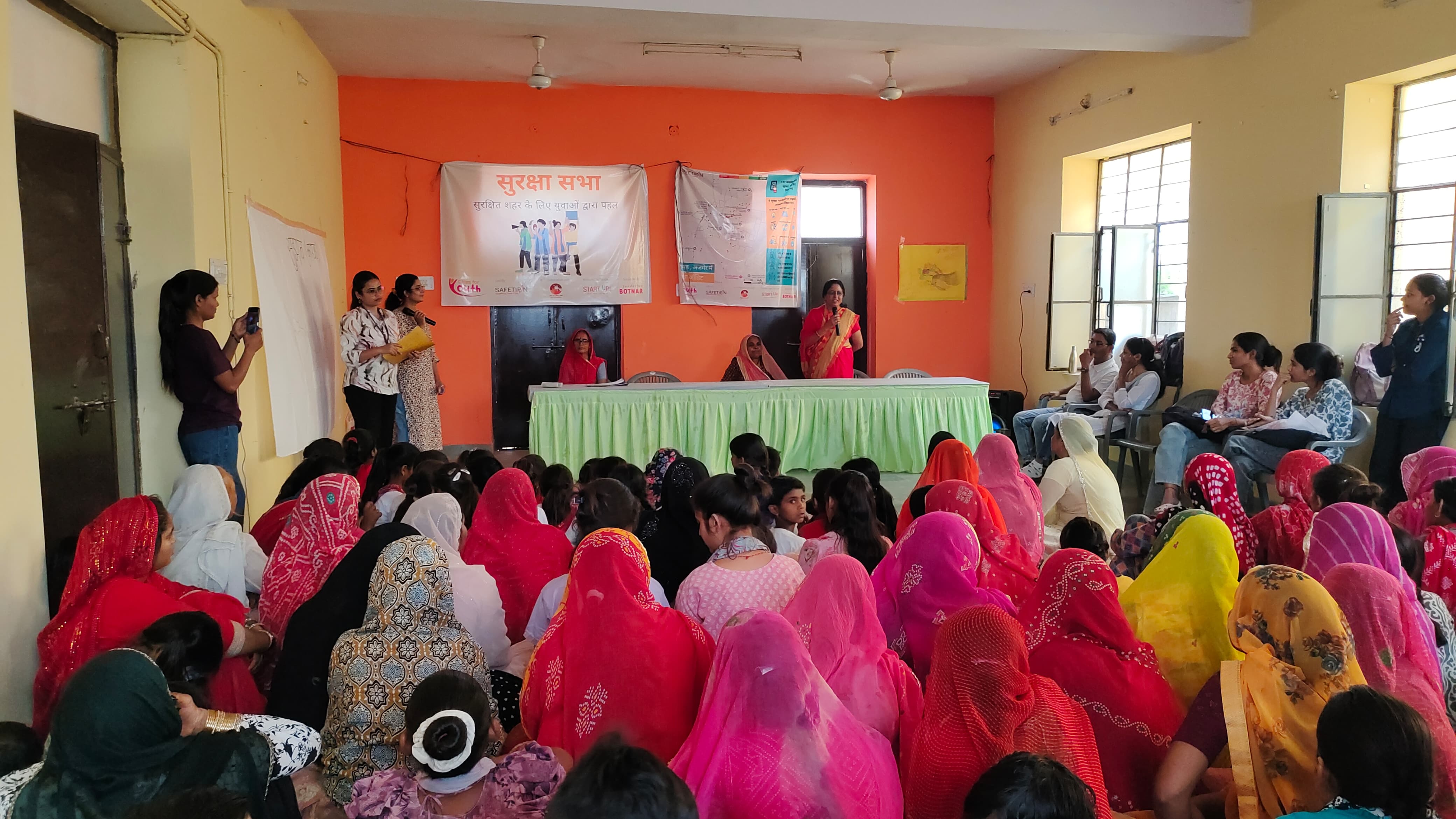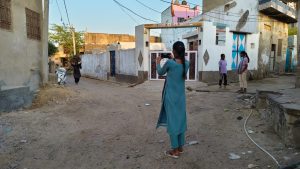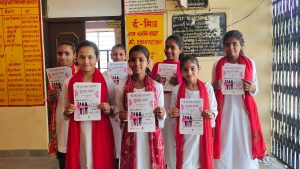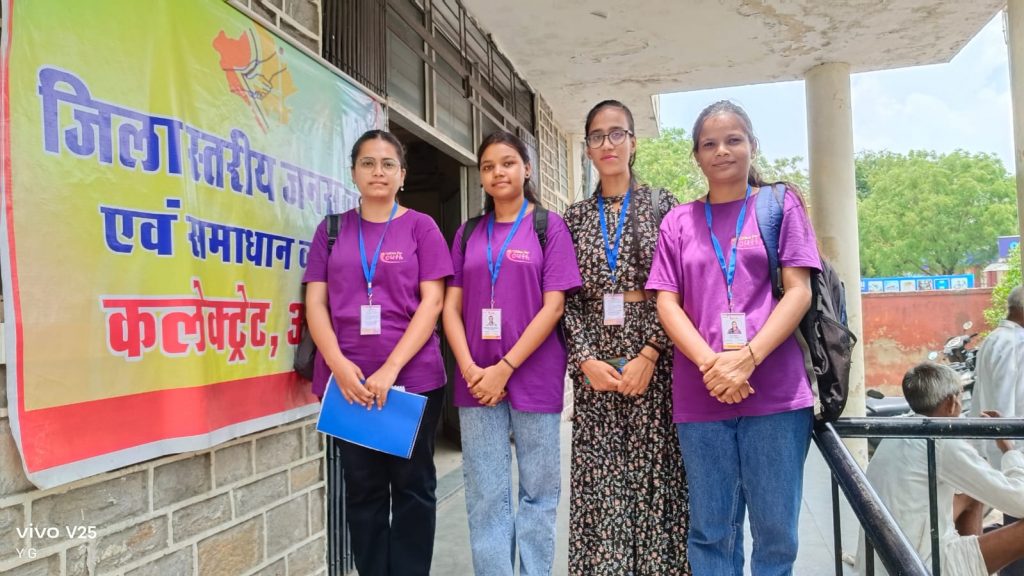
04 Aug Suraksha Sabha: Data to Dialogue
The Right to the City — For All
Suraksha Sabha is a youth-led initiative grounded in the powerful belief that everyone has the right to the city — the right to move freely, access public spaces, and feel safe while doing so.
Inspired by Jane Jacobs, a legendary urban thinker who believed that cities belong to the people who live in them, six young leaders from Ajmer turned this vision into action. Drawing from their experiences in the Cities for Youth fellowship program, they chose not to wait for
change but to lead it themselves — starting with their own neighborhoods.
Safety as a Barrier to Opportunity
Coming from diverse areas of Ajmer each of them had personally experienced how the lack of safety in public spaces often forced young people, especially girls, to compromise on opportunities — whether for jobs, education, or personal growth. They were determined to change that narrative — not just for themselves, but for their entire community.
 To take action, these six leaders mobilised and trained 30 local youth. They were introduced to the My Safetipin (MSP) app — a tool used to assess safety in public spaces across nine key parameters, including lighting, visibility, walkability, public transport availability, gender diversity, and more.
To take action, these six leaders mobilised and trained 30 local youth. They were introduced to the My Safetipin (MSP) app — a tool used to assess safety in public spaces across nine key parameters, including lighting, visibility, walkability, public transport availability, gender diversity, and more.
Together, they conducted over 900 audits across six neighbourhoods. These weren’t just numbers — they were digital stories of exclusion, neglect, and fear.
From Data Collection to Public Dialogue
Suraksha Sabha didn’t stop at data collection. The real change began when they turned data into dialogue.
The team hosted Safe Community Dialogues, also known as Suraksha Sabhas , in each of the six neighbourhoods. Maps from the audits were displayed publicly, unsafe zones marked, and findings shared with community members, ward parshads, and local officials.
 These events were youth-led, inclusive, and focused on driving real change. They weren’t just platforms to highlight issues — they became spaces where young people took ownership and led the way forward. Instead of stopping at concerns, the team came prepared with thoughtful, practical solutions — they offered concrete suggestions: fixing streetlights, improving footpaths, and making routes to schools and bus stops safer.
These events were youth-led, inclusive, and focused on driving real change. They weren’t just platforms to highlight issues — they became spaces where young people took ownership and led the way forward. Instead of stopping at concerns, the team came prepared with thoughtful, practical solutions — they offered concrete suggestions: fixing streetlights, improving footpaths, and making routes to schools and bus stops safer.
“We’ve lived with these problems for years, but this is the first time we realised — using technology and data, we can share what we need,” said by a resident of Padampura
These dialogues weren’t just about raising issues — they built new channels of trust between youth and governance. For many women and girls, this was the first time they witnessed young people leading civic discussions with such clarity and courage.
“Earlier, I used to hesitate a lot while speaking in public,” shared Sanskriti, another youth fellow.“But through this initiative, I got a platform that helped me overcome that fear — and I feel so proud of myself now.”
To ensure more voices were heard, the initiative used creative methods — including street plays, poster exhibitions, and focus group discussions. Many girls opened up about curfews, fear of harassment.
Turning Dialogue into Change
With growing momentum and strong community backing, the youth leaders took their biggest step yet — they walked into the Ajmer District Collector’s office with a purpose. In their hands were maps, audit reports, and stories from the ground — not complaints, but clear, evidence-based recommendations.

“When I organised a Suraksha Sabha in my community, I saw people’s attitudes change,” said Hemlata , one of the youth leaders. “And when I spoke to the Collector, the response I received made me feel truly heard.”
Suraksha Sabha is a reminder that cities don’t become safe by infrastructure alone — they become safer when young people are empowered to be part of the solution.
For more details and updates on many such projects and Cities for Youth, visit Cities For Youth website and follow us on Instagram @cfy_rajasthan

